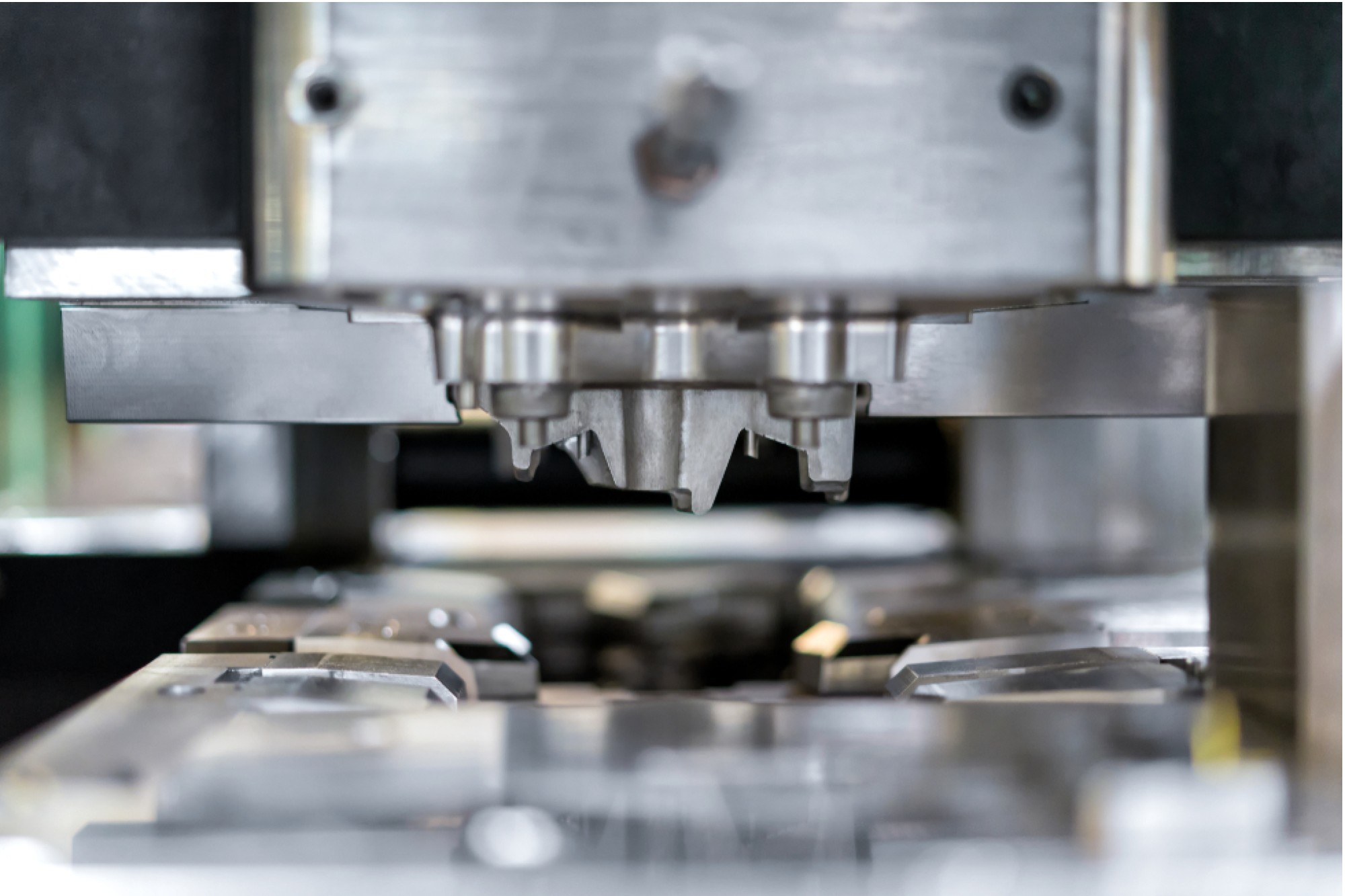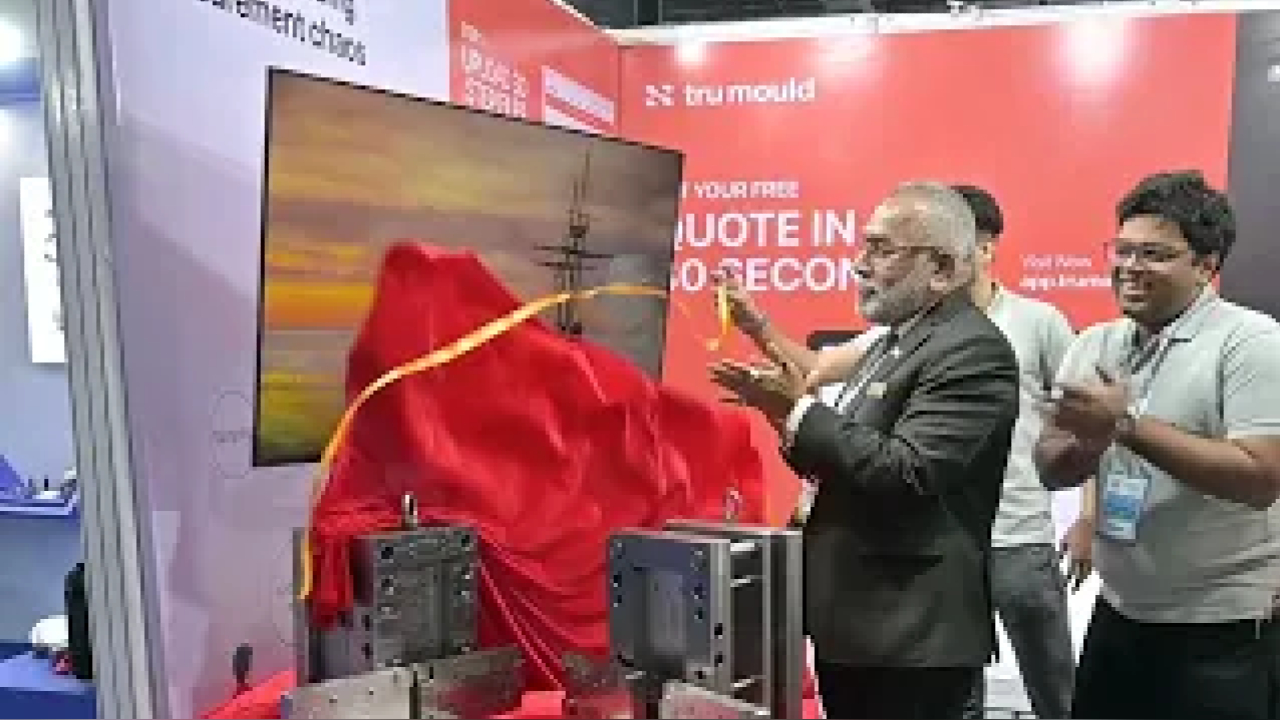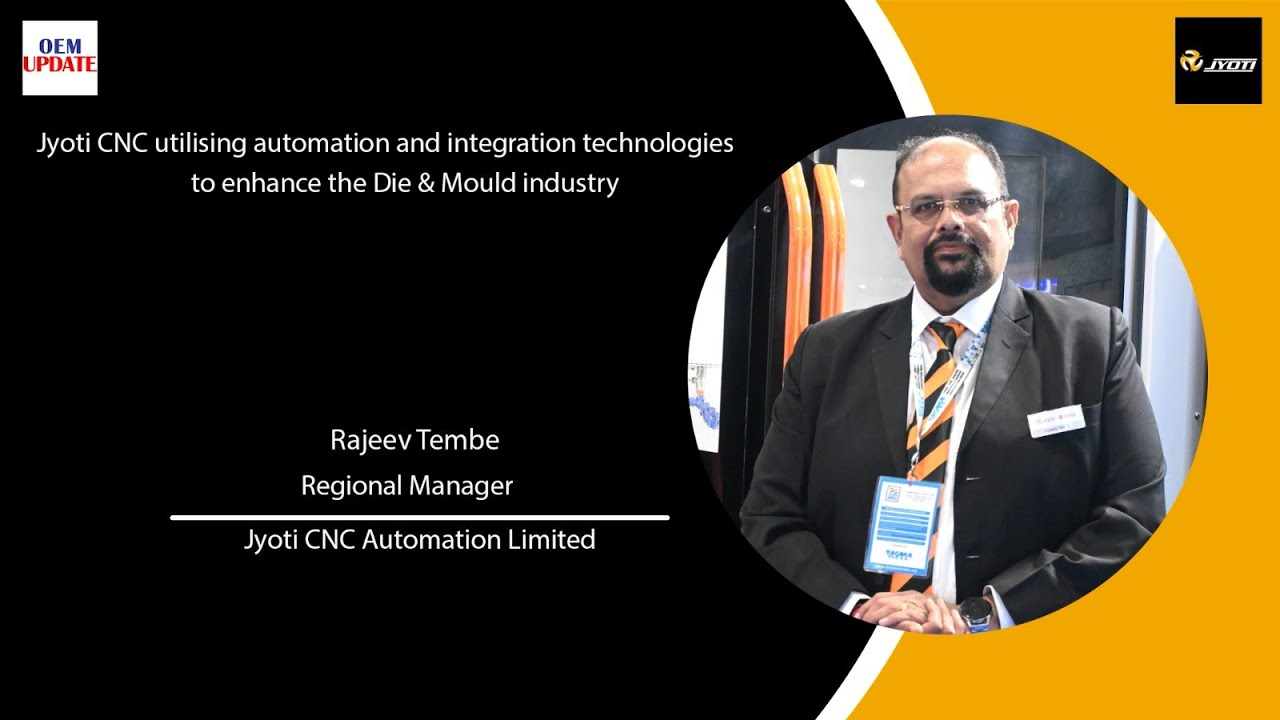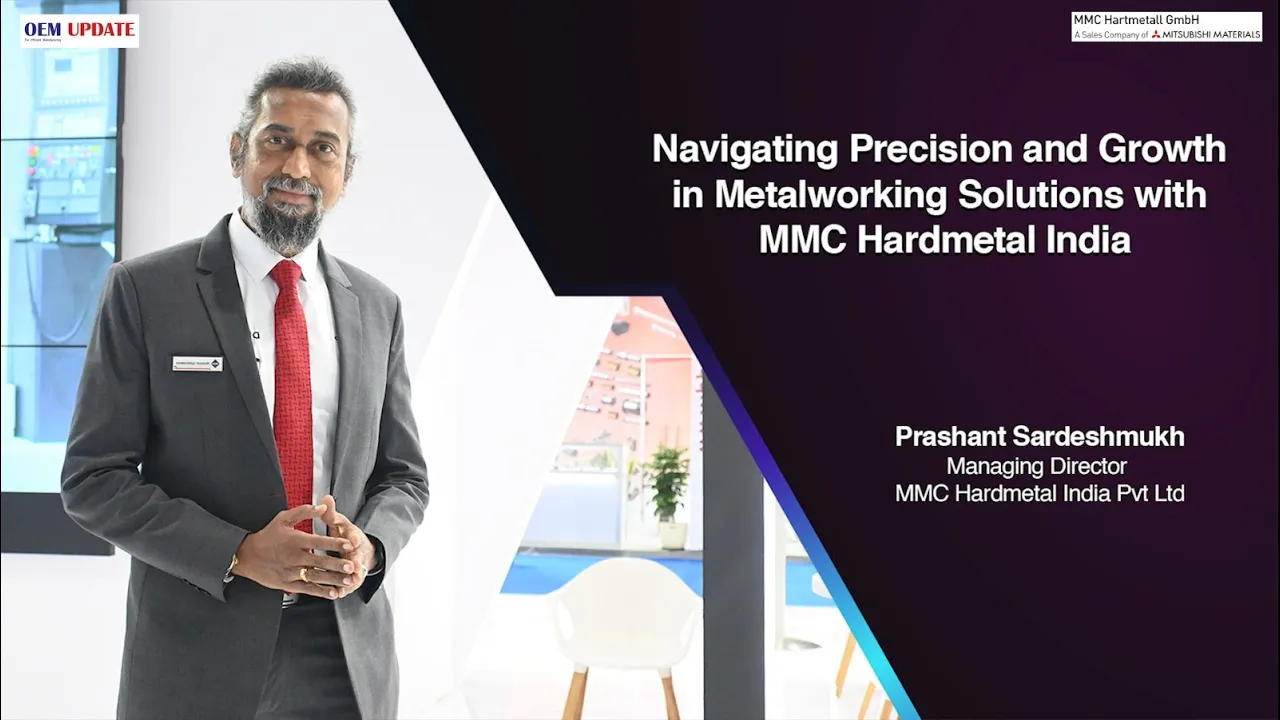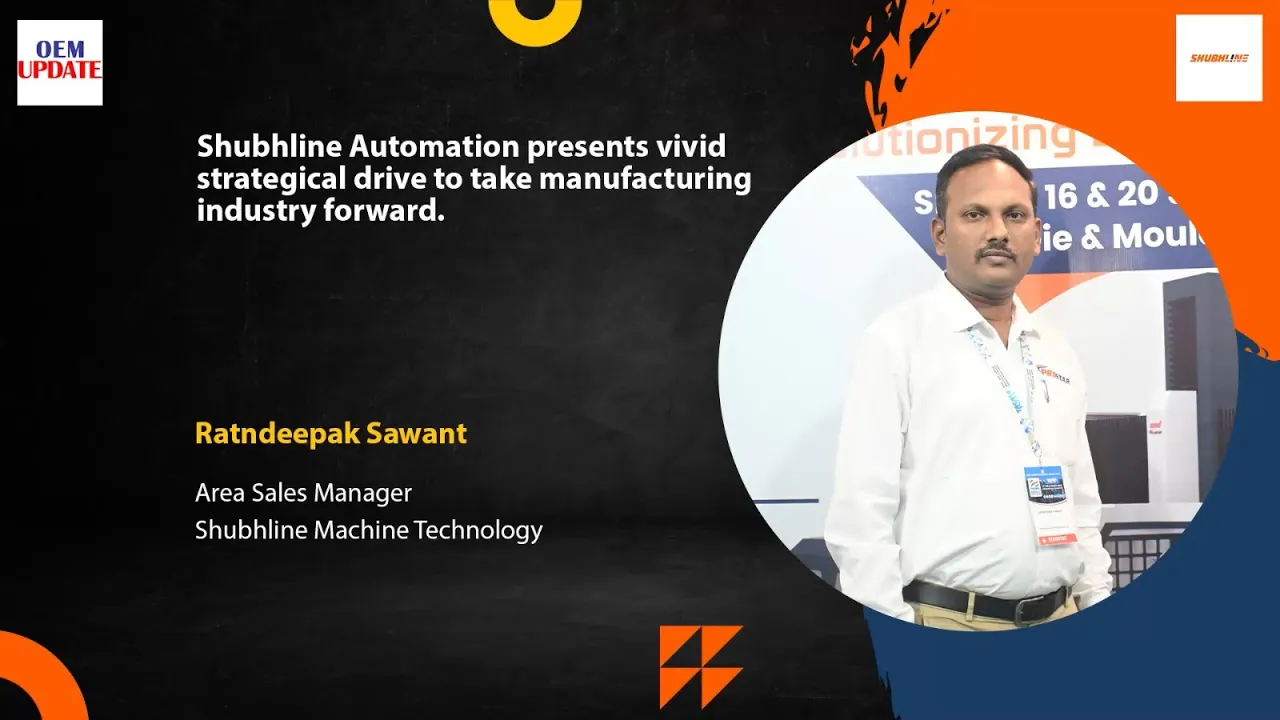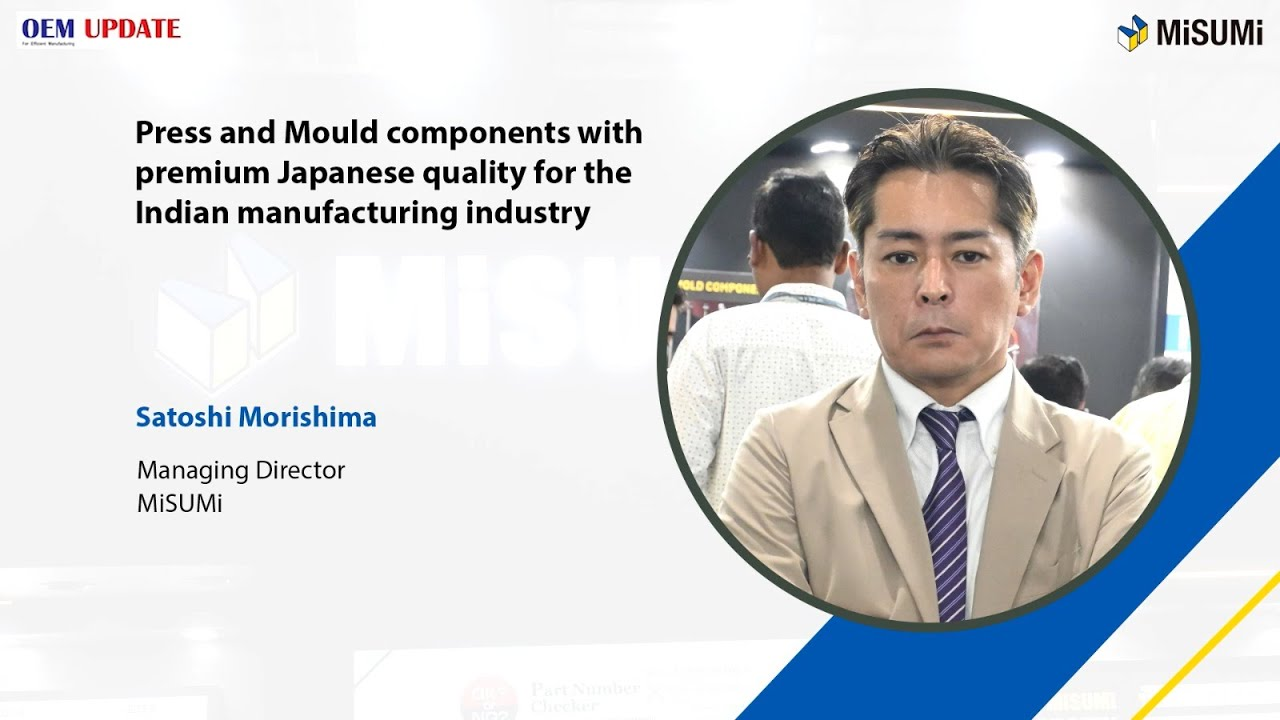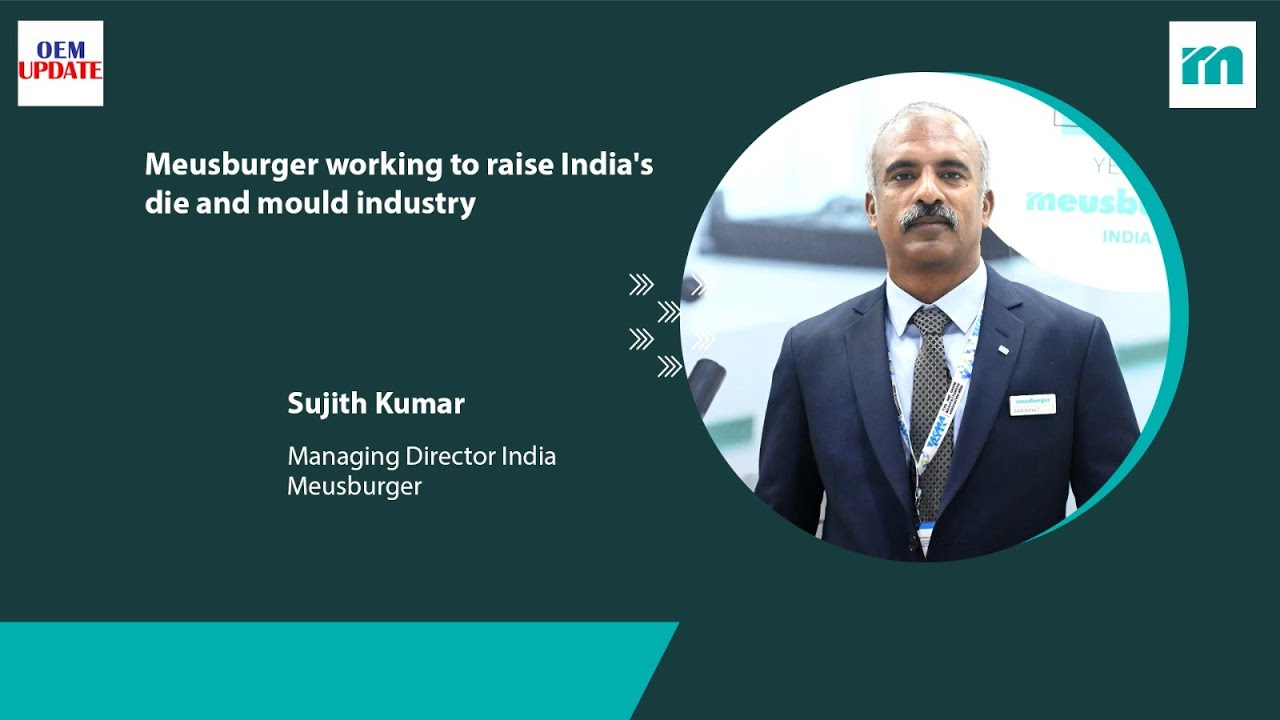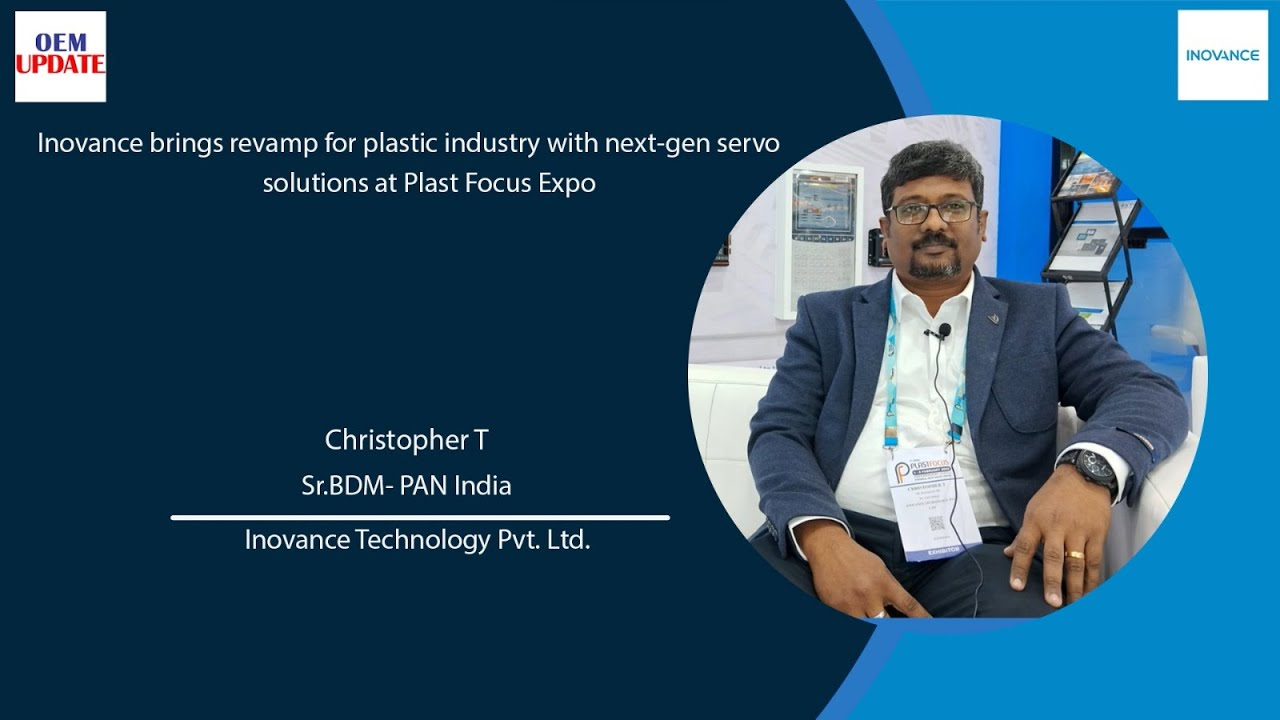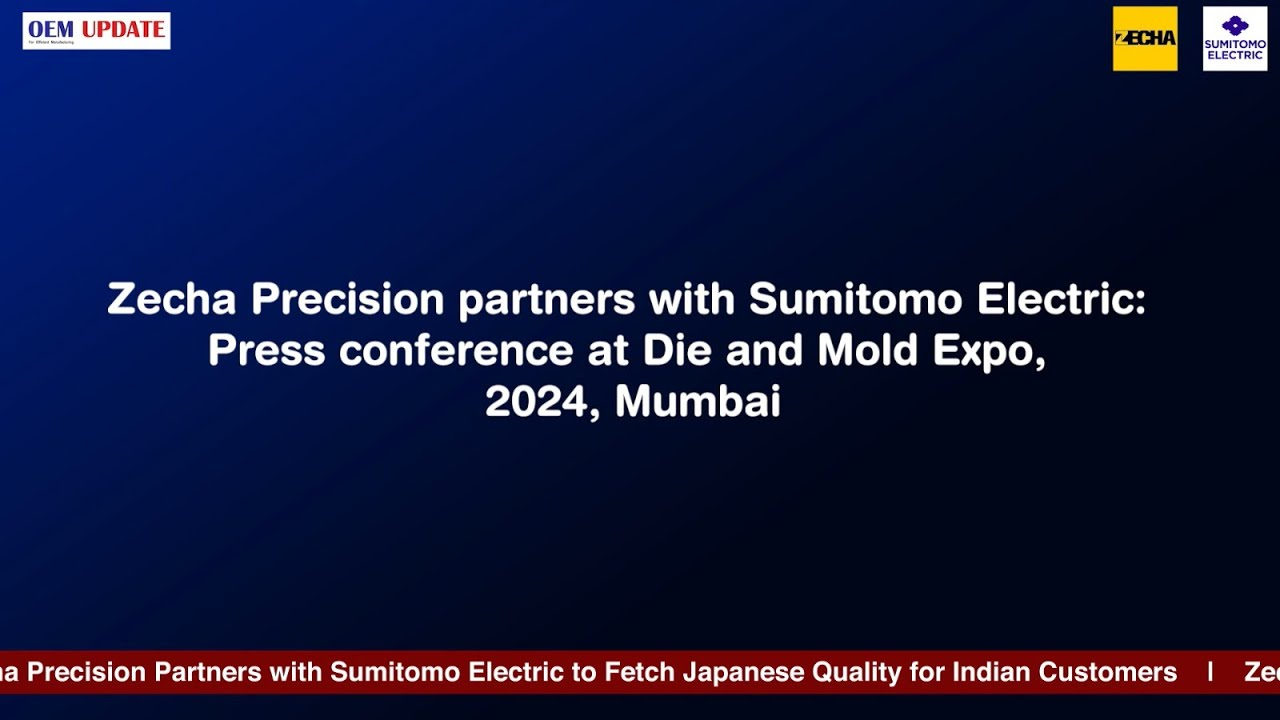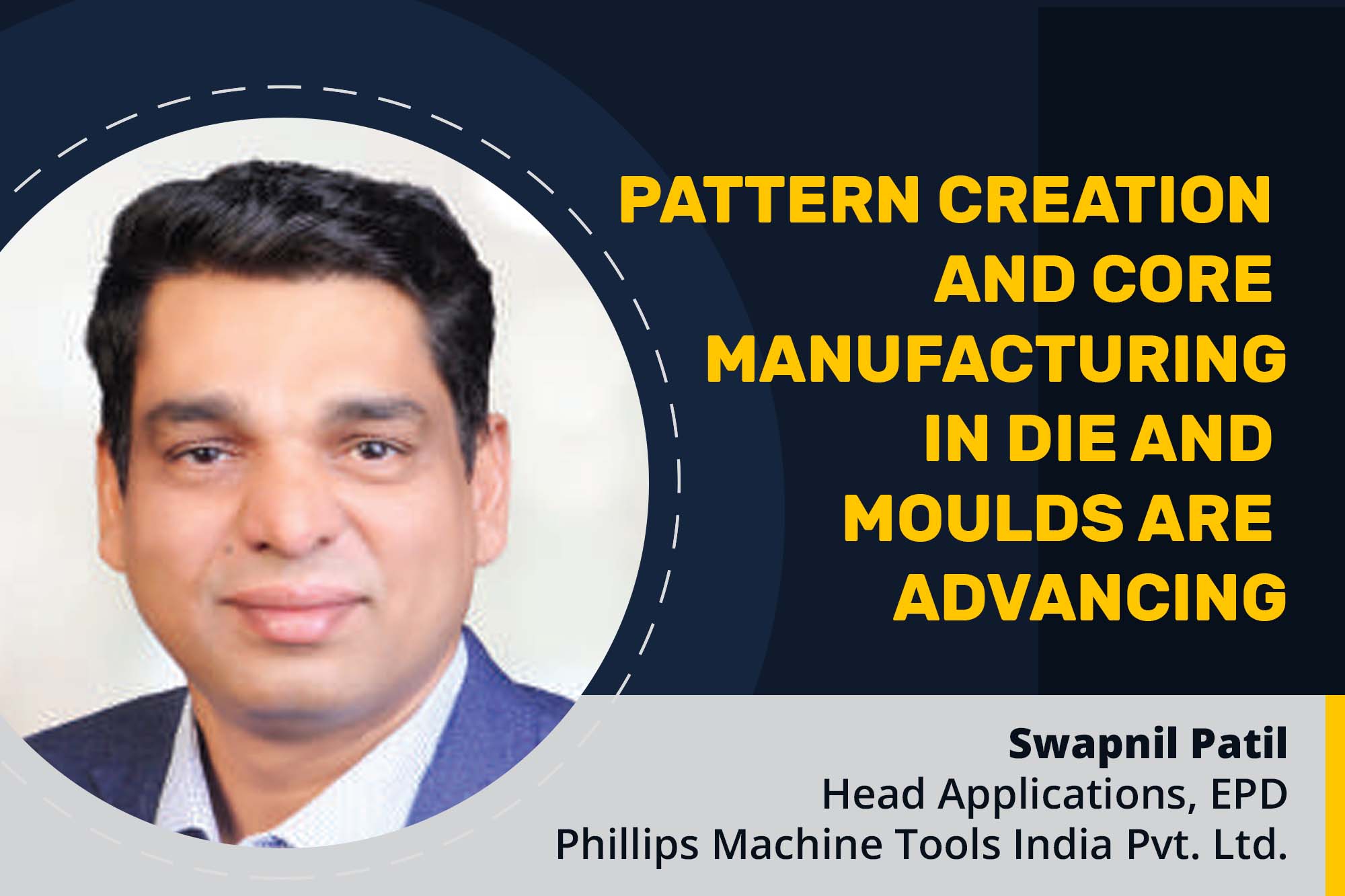EDM, WEDM and CNC have become integral for complex designs in manufacturing
By OEM Update Editorial December 29, 2023 7:09 pm IST
Material choices, technological advancements, and evolving market demands drive die and mould manufacturing. Precision, efficiency, and adaptability in materials and processes define this industry’s transformative trajectory remarks Vineet Seth, Managing Director – South Asia & Middle East, Mastercam APAC.
How does the choice of materials impact the mould’s performance and longevity?
In Die and mould manufacturing, the selection of materials is a critical determinant of production success. This decision hinges on several pivotal factors, including the essential ones like hardness, wear resistance, and thermal conductivity, which are paramount, guiding the choice towards materials such as H13 tool steels for their ability to endure high temperatures in injection moulds.
Additionally, Production volume dictates the durability needed, with higher volumes demanding sturdier materials to withstand continuous use. It is crucial to tailor materials to specific manufacturing techniques, like employing D2 tool steels for die-casting moulds due to their thermal resilience. Cost considerations weigh heavily, where extended tool life might offset initial expenses – a critical choice often erring on the former. Addressing surface finish requirements is also vital for selecting materials such as P20 that retain intricate details. For decision-makers, these factors—material properties, production volume, manufacturing techniques, cost, and surface finish requirements—comprehensively shape the choice of materials for dies and moulds, directly impacting the efficiency, quality, and overall success of the manufacturing process. However, thanks to modern CAM systems with innovative toolpath techniques, any material selection will likely be met with a corresponding strategy to help reduce costs while increasing productivity.
How have recent high-precision machining, simulation software, and sensor technology advancements impacted the Die and mould industry’s production processes?
Innovations in the Die and mould industry are revolutionising production by enhancing precision, efficiency, and quality, with Advanced manufacturing technologies driving this transformation. High-precision techniques like electrical discharge machining (EDM & WEDM) and computer numerical control (CNC) machining have become integral, enabling intricate designs and precise detailing. Additive manufacturing, specifically 3D printing, is gaining ground for rapid prototyping and creating complex geometries with enhanced precision – this is especially true in areas like conformal cooling for mould and dies, which have greater complexities in features and deep geometries. Simulation software is also trending, allowing for virtual testing and optimisation of designs before physical production, minimising errors and improving efficiency – and this is true for material flow characteristics, toolpath simulations, and cooling analysis. Additionally, advancements in sensor technology and real-time monitoring systems are optimising process control and detecting potential issues promptly, ensuring higher-quality outputs.
How is additive manufacturing revolutionising complex component manufacturing across polymer and metal printing methods?
3D printing is revolutionising certain areas within complex component manufacturing that would otherwise have had to be done using multiple subtractive and forming methods. This area has been the largest beneficiary of 3D printing.
Polymer and metal additive manufacturing practices offer diverse 3D printing methods that efficiently produce intricate components while maintaining high-quality standards at cost-effective levels. In polymer printing, techniques like Stereolithography (SLA), Selective Laser Sintering (SLS), Fused Deposition Modeling (FDM), and Digital Light Processing (DLP) excel in creating detailed prototypes and functional parts. They ensure fine surface finishes and strong structures, catering to rapid prototyping and small-scale production needs.
On the other hand, metal additive manufacturing methods, such as Selective Laser Melting (SLM) or Electron Beam Melting (EBM), utilise powdered metals fused by high-energy sources to construct robust, intricate metal components. These metal printing methods deliver high-quality output, enabling the fabrication of complex parts for industries like aerospace and automotive, where durability and precision are paramount. The different approaches within polymer and metal additive manufacturing offer a spectrum of options, balancing cost-effectiveness with producing intricate, high-quality components across various industrial applications.
In India, additive manufacturing is revolutionising the automotive, healthcare, aerospace, and education industries. It enables rapid prototyping, personalised healthcare solutions, and intricate part production for defence and aerospace. Government initiatives and industry-academia collaborations drive innovation, aiding startups and SMEs while fostering research and development.
How does the integration of robotics impact the manufacturing of plastic components?
Integrating robots in plastic component manufacturing within the Die and mould industry streamlines production by automating parts handling, assembly, and quality control tasks. These robots, equipped with precision and speed, enhance efficiency, minimise errors, and increase output consistency. They excel in repetitive tasks, boosting productivity and reducing operational costs while ensuring accuracy in complex operations. Moreover, their flexibility allows easy adaptation to different mould designs and component variations, making them invaluable assets in modern manufacturing setups. By collaborating seamlessly with human workers, robots contribute to a safer work environment while enabling faster production cycles, meeting the growing demand for high-quality plastic components. Their role in the die and mould industry signifies a continued shift towards advanced, technology-driven manufacturing, optimising processes & overall operational efficiency.
What are the diverse types of Dies and Moulds used in manufacturing processes?
To answer, firstly, we need to understand the different types of Dies and Moulds that are typically manufactured, and these can be summarised as –
Metal Dies & Moulds – These are predominantly used for polymer and metal injection moulding, forming stamping, or extruding processes.
Patterns and Sand Moulds – typically used in foundries and specific die-casting methods
Composite moulds – for producing composite components, typically glass fibre-based when considering volumes.
Other moulds vary per the requirement and can be made from wood, sheet metal, concrete, glass, etc.As far as metal Dies and moulds are concerned, they are typically reused until the end of the equipment’s life, after which they are scrapped to be re-melted. This is usually a long period, and most of the moulds & dies are stored by manufacturers, thereby keeping a high processed material inventory.
Foundry sand, often contaminated with metals and other materials, can pose risks if disposed of improperly. Industry regulations emphasise proper handling and management practices. Recycling and reusing foundry sand are encouraged where feasible, reducing waste and environmental impact. Some foundry sands might also undergo treatment processes to remove contaminants before disposal or reuse. Patterns used in foundries, often made from wood or plastics, can be recycled when applicable.
Composite and glass fibre moulds are known for their durability, strength, and suitability for various manufacturing processes. However, regulations specific to their disposal and treatment might not be as widely established as those for other materials. They present a huge disposal challenge due to their material composition and various resins embedded in them. Some facilities for shredding and recycling are rare, and the unorganised industry needs to be known to dispose of these materials responsibly.
What future do you envisage for the die and mould industry in the context of technological advancements and market demands?
The Die and mould industry has been a remarkable industry for generations. Always leading the innovation in precision manufacturing, the Die and mould industry is expected to lead future innovations and practices in discreet high-precision manufacturing and high-speed production of sheet metal and plastic components.
The future of the Die and mould industry is poised for transformation through technological strides and evolving market needs. Advanced technologies like additive manufacturing, AI-driven design, and innovative materials reshape manufacturing processes. Market demands are steering the industry towards customisation, sustainability, and cost-effectiveness.
Meeting the demand for shorter production cycles and cost efficiency will fuel the integration of automation and smart manufacturing technologies in Die & mould production.
A more interconnected approach between designers, manufacturers, and end-users will ensure precise Die & mould customisations to match market demands.
What manufacturing trends are focused on customising moulds essential for producing automotive components?
Due to the changing market scenario, automotive component manufacturing is seeing several new demands. One significant trend is the surge in demand for lightweight and durable materials. This necessitates custom moulds that accommodate materials like carbon fibre composites or advanced alloys. The push towards electric vehicles is another pivotal trend, requiring moulds tailored to the unique designs of battery casings and related components. Moreover, the emphasis on smart features in vehicles calls for moulds that integrate sensors or electronic components seamlessly. Additive manufacturing is making waves by enabling the swift and cost-effective creation of intricate, custom-designed moulds, catering to the evolving demands of automotive manufacturers. Staying abreast of these trends in customising moulds for automotive components is paramount to effectively meeting the industry’s evolving requirements.
What recent advancements are taking place in CAD/CAM software tools catering to CNC programming requirements?
CAD/CAM software tools have recently seen many advancements and have significantly higher capabilities than traditional CAD/CAM tools, and Mastercam is a notable example in this landscape. One key advancement involves the integration of more intuitive and user-friendly interfaces, allowing for smoother navigation and easier access to advanced functionalities. Enhanced simulation features offer a more comprehensive preview of machining processes, enabling users to detect and rectify potential issues before actual production, thereby minimising errors and optimising efficiency. Moreover, integrating cloud-based solutions has facilitated seamless collaboration and project access across multiple devices, promoting enhanced workflow flexibility. Additionally, incorporating AI-driven algorithms and machine learning capabilities in CNC programming has bolstered automation, enabling quicker toolpath generation and optimisation based on historical data, ultimately enhancing precision and productivity. These advancements collectively represent the evolution of CAD/CAM software tools, aiming to streamline CNC programming, improve user experience, and elevate machining capabilities.
How do die & mould manufacturers leverage multitasking machines and advanced CAD/CAM/CAI tools to optimise production efficiency?
Heightened demand for lightweight, durable materials across automotive, aerospace, and healthcare sectors drives the need for innovative moulds capable of handling intricate designs and complex geometries. Simultaneously, the industry’s shift toward eco-friendly practices propels exploration into biodegradable and recycled materials, compelling Die and mould manufacturers to adapt processes to accommodate these sustainable materials. Manufacturers are investing in multitasking machines to offset the cost of the highly competitive market of Plastic injection moulds.
A smaller footprint, meaning lesser real estate space, ensures that companies can increase production per sqft without moving out to remote industrial spaces or expanding in the exact expensive location. Further, these manufacturers are also investing in modern CAD/CAM/CAI tools to ensure they get their processes right the first time, ensuring near zero rework or wastage.
Cookie Consent
We use cookies to personalize your experience. By continuing to visit this website you agree to our Terms & Conditions, Privacy Policy and Cookie Policy.




